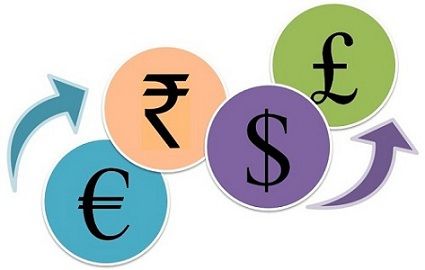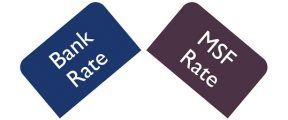 Fixed exchange rate and flexible exchange rate are two exchange rate systems, differ in the sense that when the exchange rate of the country is attached to the another currency or gold prices, is called fixed exchange rate, whereas if it depends on the supply and demand of money in the market is called flexible exchange rate.
Fixed exchange rate and flexible exchange rate are two exchange rate systems, differ in the sense that when the exchange rate of the country is attached to the another currency or gold prices, is called fixed exchange rate, whereas if it depends on the supply and demand of money in the market is called flexible exchange rate.
The depreciation of Indian Rupee against US dollar is the common headline of almost all news dailies, since past few years. Not only India but the primary concern of the monetary policy of all the countries focus on stabilising the exchange rate. However, still, a major section of society is unaware about currency fluctuations in the international market, as they do not have sufficient knowledge.
First of all, you need to know what exchange rate is? As its name suggests, it is a rate at which the currency of one country can be exchanged (converted) for another. Exchange rate regime or system refers to a set of international rules that manages the setting of exchange rates and the foreign exchange market. Take a read of this article, to know the important differences between fixed and flexible exchange rates.
Content: Fixed Exchange Rate Vs Flexible Exchange Rate
Comparison Chart
| Basis for Comparison | Fixed Exchange Rate | Flexible Exchange Rate |
|---|---|---|
| Meaning | Fixed exchange rate refers to a rate which the government sets and maintains at the same level. | Flexible exchange rate is a rate that variate according to the market forces. |
| Determined by | Government or central bank | Demand and Supply forces |
| Changes in currency price | Devaluation and Revaluation | Depreciation and Appreciation |
| Speculation | Takes place when there is rumor about change in government policy. | Very common |
| Self-adjusting mechanism | Operates through variation in supply of money, domestic interest rate and price. | Operates to remove external instability by change in forex rate. |
Definition of Fixed Exchange Rate
An exchange rate regime, also known as the pegged exchange rate, wherein the government and central bank attempts to keep the value of the currency is fixed against the value of other currencies, is called fixed exchange rate. Under this system, the flexibility of exchange rate (if any) is permitted, under IMF (International Monetary Fund) arrangement, but up to a certain extent.
In India, when the currency price is fixed, an official price of its currency in reserve currency is issued by the apex bank, i.e. Reserve Bank of India. After the determination of the rate, the RBI undertakes to buy and sell foreign exchange, and the private purchases and sales are postponed. The central bank makes changes in the exchange rate (if necessary).
Definition of Flexible Exchange Rate
A monetary system, wherein the exchange rate is set according to the demand and supply forces, is known as flexible or floating exchange rate. The economic position of the country determines the market demand and supply for its currency.
In this system, the currency price is market determined, concerning other currencies, i.e. the higher the demand for a particular currency, the higher is its exchange rate and the lower the demand, the lesser is the value of currency compared to other currencies. Therefore, the exchange rate is not under the control of the government or central bank.
Key Differences Between Fixed and Flexible Exchange Rates
The following points are noteworthy so far as the difference between fixed and flexible exchange rates is concerned:
- The exchange rate which the government sets and maintains at the same level is called fixed exchange rate. The exchange rate that variates with the variation in market forces is called flexible exchange rate.
- The fixed exchange rate is determined by government or the central bank of the country. On the other hand, the flexible exchange rate is fixed by demand and supply forces.
- In fixed exchange rate regime, a reduction in the par value of the currency is termed as devaluation and a rise as the revaluation. On the other hand, in the flexible exchange rate system, the decrease in currency price is regarded as depreciation and increase, as appreciation.
- Speculation is common in the flexible exchange rate. Conversely, in the case of fixed exchange rate speculation takes place when there is a rumour about change in government policy.
- In fixed exchange rate, the self-adjusting mechanism operates through variation in the supply of money, domestic interest rate and price. As opposed to the flexible exchange rate that operates to remove external instability by the change in forex rate.
Conclusion
As both the exchange rate system have their positive and negative aspects. It is not possible for economists to reach a particular conclusion, so the debate is indecisive, as counter arguments keep coming from both regimes. While theoreticians are favours flexible exchange rate due to their reliance on the free market system and price mechanism, policy makers, and central bankers supported fixed exchange rate system.






Kunal says
nice and detailed
Snigdha says
helpful